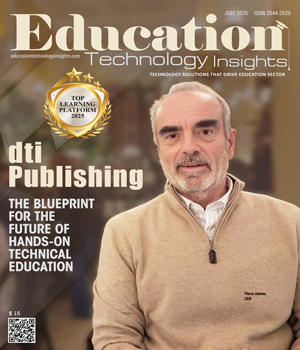THANK YOU FOR SUBSCRIBING
Be first to read the latest tech news, Industry Leader's Insights, and CIO interviews of medium and large enterprises exclusively from Education Technology Insights
Preparing Students for a Stem Future
Angela L. Askew, Ed.D., Dean of Students, Memphis-Shelby County Schools
 Angela L. Askew, Ed.D., Dean of Students, Memphis-Shelby County Schools
Angela L. Askew, Ed.D., Dean of Students, Memphis-Shelby County SchoolsAs a STEM educator, I see every day how today’s learners have unprecedented access to information. With just a few taps on a smartphone, tablet, laptop, or desktop computer, students can explore virtually any topic that piques their interest. This accessibility is a testament to the impact of STEM—science, technology, engineering and mathematics—on our modern world and the evolving job market. STEM is not only at the core of technological advancement but also central to the most rapidly growing career sectors. According to the U.S. Bureau of Labor Statistics, STEM employment is projected to grow by 8.0% from 2019 to 2029, more than double the rate of nonSTEM occupations. Between 2022 and 2032 alone, nearly 450,000 STEM-related job openings are anticipated—many in fields that do not yet exist. The question becomes: how are we, as educators, preparing students to thrive in this future?
In classrooms across the country, educators are responding to this challenge with intentionality and innovation. Schools are increasingly incorporating STEM practices into instruction, ensuring students engage with science, technology, engineering, and mathematics in meaningful, hands-on ways. Exposure to STEM can take many forms—there is no one-size-fits-all model. For example, one elementary school might offer after-school coding clubs, while another embeds coding lessons directly into the school day. Regardless of approach, the goal is consistent: spark student curiosity and connect them with real-world applications that build both interest and skill.
A well-designed STEM education goes beyond academic content. It also nurtures essential 21st-century competencies— critical thinking, creativity, collaboration, communication, and problem-solving. Project-based learning is one of the most effective ways to build these skills. Through designing solutions, testing prototypes, analyzing data, or working in teams, students develop habits of mind that mirror the realities of STEM careers.
“By integrating hands-on STEM education, we not only prepare students for evolving careers but also cultivate critical thinking, creativity, collaboration, and resilience—skills that serve all pathways. Empowered STEM learners become adaptive problem-solvers poised to innovate and lead in any field”
However, for this work to be successful, educators must play a central and intentional role. We are more than deliverers of content; we are facilitators of inquiry, guides through the learning process, and mentors who model how to approach complex problems. When students encounter challenges or uncertainty, it’s our responsibility to support their growth, helping them build confidence and resilience. The quality of STEM instruction and the ways we present these opportunities significantly affect student motivation and long-term engagement.
There is no doubt that STEM careers hold tremendous promise. With significantly higher growth rates and salary potential than non-STEM fields, these jobs offer both stability and advancement. In fact, the median hourly wages for STEM jobs is $38.85—nearly double that of non-STEM jobs at $19.30. Additionally, students with STEM degrees often transition into the workforce more seamlessly, as the demand for their skill sets continues to rise.
Yet, the value of a STEM education extends well beyond job placement. STEM learning develops universally transferable skills—adaptability, analytical thinking, leadership, and a solutions-oriented mindset—that benefit students no matter their career path. Even for those who ultimately pursue non-STEM professions, the foundational skills gained through STEM experiences will serve them in any industry or endeavor.
Pursuing a career in STEM is just one of many pathways available to students, and our role as educators is to ensure they are aware of and prepared for these opportunities. By equipping learners with both the technical knowledge and the critical soft skills embedded in STEM education, we are opening doors to a future of possibility, innovation, and choice.
Read Also
Our AI Crisis isn't Technical. It's Human.
4 Keys to Managing Change
Active Engagement is the Foundation of Effective Leadership
Empowering Leadership through Innovation in Higher Education
Redefining Readiness: A Path Toward a Technology-Agnostic Future
The New Era of Education

I agree We use cookies on this website to enhance your user experience. By clicking any link on this page you are giving your consent for us to set cookies. More info

However, if you would like to share the information in this article, you may use the link below:
www.educationtechnologyinsightsapac.com/cxoinsights/angela-l-askew-nid-3183.html





















